Endogenous PI3K/Akt and NMDAR act independently in the regulation of CREB activity in lumbosacral spinal cord in cystitis
- PMID: 24184018
- PMCID: PMC3878196
- DOI: 10.1016/j.expneurol.2013.10.015
Endogenous PI3K/Akt and NMDAR act independently in the regulation of CREB activity in lumbosacral spinal cord in cystitis
Abstract
The integral interaction of signaling components in the regulation of visceral inflammation-induced central sensitization in the spinal cord has not been well studied. Here we report that phosphoinositide 3-kinase (PI3K)-dependent Akt activation and N-methyl-d-aspartic acid receptor (NMDAR) in lumbosacral spinal cord independently regulate the activation of cAMP response element-binding protein (CREB) in vivo in a rat visceral pain model of cystitis induced by intraperitoneal injection of cyclophosphamide (CYP). We demonstrate that suppression of endogenous PI3K/Akt activity with a potent PI3K inhibitor LY294002 reverses CYP-induced phosphorylation of CREB, however, it has no effect on CYP-induced phosphorylation of NR1 at Ser(897) and Ser(896); conversely, inhibition of NMDAR in vivo with MK801 fails to block CYP-induced Akt activation but significantly attenuates CYP-induced CREB phosphorylation in lumbosacral spinal cord. This novel interrelationship of PI3K/Akt, NMDAR, and CREB activation in lumbosacral spinal cord is further confirmed in an ex vivo spinal slice culture system exposed to an excitatory neurotransmitter calcitonin gene-related peptide (CGRP). Consistently we found that CGRP-triggered CREB activation can be blocked by both PI3K inhibitor LY294002 and NMDAR antagonists MK801 and D-AP5. However, CGRP-triggered Akt activation cannot be blocked by MK801 or D-AP5; vice versa, LY294002 pretreatment that suppresses the Akt activity fails to reverse CGRP-elicited NR1 phosphorylation. These results suggest that PI3K/Akt and NMDAR independently regulate spinal plasticity in visceral pain model, and target of a single pathway is necessary but not sufficient in treatment of visceral hypersensitivity.
Keywords: Akt; CREB; Central sensitization; NMDAR; Spinal cord.
© 2013.
Figures

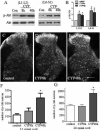
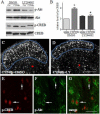
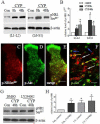

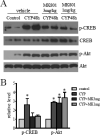
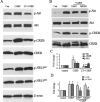
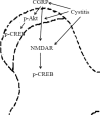
Similar articles
-
Endogenous BDNF augments NMDA receptor phosphorylation in the spinal cord via PLCγ, PKC, and PI3K/Akt pathways during colitis.J Neuroinflammation. 2015 Aug 20;12:151. doi: 10.1186/s12974-015-0371-z. J Neuroinflammation. 2015. PMID: 26289587 Free PMC article.
-
Activation of extracellular signal-regulated protein kinase 5 is essential for cystitis- and nerve growth factor-induced calcitonin gene-related peptide expression in sensory neurons.Mol Pain. 2012 Jun 28;8:48. doi: 10.1186/1744-8069-8-48. Mol Pain. 2012. PMID: 22742729 Free PMC article.
-
Estrogen-induced Bcl-2 expression after spinal cord injury is mediated through phosphoinositide-3-kinase/Akt-dependent CREB activation.J Neurotrauma. 2008 Sep;25(9):1121-31. doi: 10.1089/neu.2008.0544. J Neurotrauma. 2008. PMID: 18785877
-
Qualitative review on N-methyl-D-aspartate receptor expression in rat spinal cord during the postnatal development: Implications for central sensitization and pain.Dev Neurobiol. 2020 Nov;80(11-12):443-455. doi: 10.1002/dneu.22789. Epub 2020 Nov 20. Dev Neurobiol. 2020. PMID: 33131183 Free PMC article.
-
The role of PI3K/Akt signalling pathway in spinal cord injury.Biomed Pharmacother. 2022 Dec;156:113881. doi: 10.1016/j.biopha.2022.113881. Epub 2022 Oct 19. Biomed Pharmacother. 2022. PMID: 36272264 Review.
Cited by
-
Suppression of the PI3K pathway in vivo reduces cystitis-induced bladder hypertrophy and restores bladder capacity examined by magnetic resonance imaging.PLoS One. 2014 Dec 8;9(12):e114536. doi: 10.1371/journal.pone.0114536. eCollection 2014. PLoS One. 2014. PMID: 25486122 Free PMC article.
-
Endogenous BDNF augments NMDA receptor phosphorylation in the spinal cord via PLCγ, PKC, and PI3K/Akt pathways during colitis.J Neuroinflammation. 2015 Aug 20;12:151. doi: 10.1186/s12974-015-0371-z. J Neuroinflammation. 2015. PMID: 26289587 Free PMC article.
-
Neurotrophin signaling and visceral hypersensitivity.Front Biol (Beijing). 2014 Jun;9(3):216-224. doi: 10.1007/s11515-014-1304-4. Front Biol (Beijing). 2014. PMID: 25484893 Free PMC article.
-
Satellite Glial Cells Bridge Sensory Neuron Crosstalk in Visceral Pain and Cross-Organ Sensitization.J Pharmacol Exp Ther. 2024 Jul 18;390(2):213-221. doi: 10.1124/jpet.123.002061. J Pharmacol Exp Ther. 2024. PMID: 38777604 Free PMC article. Review.
-
Plp1-expresssing perineuronal DRG cells facilitate colonic and somatic chronic mechanical pain involving Piezo2 upregulation in DRG neurons.Cell Rep. 2024 May 28;43(5):114230. doi: 10.1016/j.celrep.2024.114230. Epub 2024 May 13. Cell Rep. 2024. PMID: 38743566 Free PMC article.
References
-
- Anderson LE, Seybold VS. Phosphorylated cAMP response element binding protein increases in neurokinin-1 receptor-immunoreactive neurons in rat spinal cord in response to formalin-induced nociception. Neuroscience Letters. 2000;283(1):29–32. - PubMed
-
- Benemei S, Nicoletti P, Capone JG, Geppetti P. CGRP receptors in the control of pain and inflammation. Current Opinion in Pharmacology. 2009;9(1):9–14. - PubMed
MeSH terms
Substances
Grants and funding
LinkOut - more resources
Full Text Sources
Other Literature Sources
Molecular Biology Databases
Research Materials
